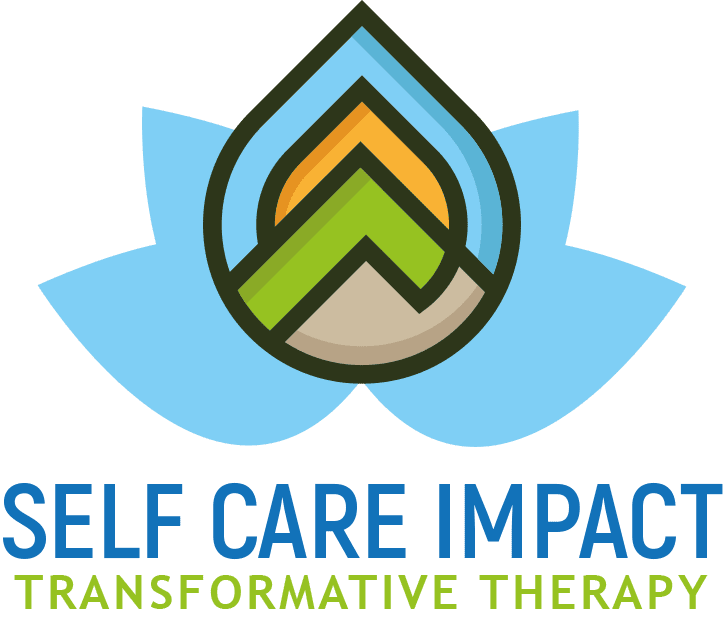Emotional self-regulation is an important skill that involves the capacity to respond to emotional experiences in a positive and helpful way. This skill is pivotal in various aspects of everyday life. For instance, consider a situation where you find yourself in an argument with a partner. Anger is your initial response but emotional self-regulation encourages you to stop and think it there is a better way. Think about it as 3 steps
1. Identify the emotion you are feeling
2. Why do you feel this way? What are the reasons?
3. Is there a better way? Your feelings are important so how can you communicate those feelings while being respectful and non-controntational?
Emotional self-regulation is deeply connected with mental well-being. It allows you to maintain a balanced emotional state, reducing the likelihood of being overwhelmed by negative emotions such as stress, anxiety, or anger. This balance is key to cultivating a sense of inner peace and resilience, empowering you to face life’s challenges with a more positive and composed outlook.
Here are Seven Tips for Improving Your Emotional Self-Regulation:
1. Identify and Manage Your Emotions:
The journey of emotional self-regulation begins with the fundamental step of identifying and naming your emotions. This process is more than just acknowledging when you feel sad, angry, anxious, or happy; it’s about delving into the nuances of your emotional spectrum. Recognizing and understanding these emotions lays the groundwork for managing them effectively. A key aspect of this is developing a rich and varied emotional vocabulary. Often, we tend to oversimplify our feelings, categorizing complex emotions into basic labels like ‘sad’ or ‘happy.’ However, emotions are far more intricate and layered. By expanding your emotional lexicon with words such as ‘frustrated,’ ‘overwhelmed,’ ‘content,’ or ‘elated,’ you gain a more precise insight into your emotional state. This clarity is crucial for addressing your feelings appropriately.
Beyond mere recognition, the practice of “Cognitive Reframing” plays a pivotal role in emotional management. This concept, often utilized in cognitive-behavioral therapy, involves altering your perception of events to change your emotional response. For instance, viewing a challenging situation as an opportunity for growth rather than a setback can significantly shift your emotional experience. It’s about reframing your thoughts to foster a more positive or realistic emotional response.
This technique is not just about positive thinking; it’s a structured approach to dissecting and understanding your thoughts and the emotions they elicit. By examining the accuracy and helpfulness of your thoughts, you can identify patterns that might be contributing to negative emotional states. Cognitive reframing empowers you to replace these patterns with more balanced and constructive thought processes.
Incorporating this approach into your daily life involves mindfulness and self-awareness. It’s about catching yourself in the moment of an emotional reaction and taking a step back to assess and potentially reframe your thoughts. Over time, this practice can lead to a profound shift in how you experience and manage your emotions, leading to improved emotional well-being and resilience.
2. Mindfully Express your Feelings
Mindful expression involves acknowledging your emotions without overreacting. It’s about expressing how you feel in a controlled and socially appropriate manner. This can be achieved through mindful practices like pausing before responding in stressful situations, using ‘I’ statements to express feelings, and actively listening to others without judgment.
At this point, you’re venturing into a personalized approach to emotional management. Once you’ve identified and understood your emotion, and have cultivated self-compassion towards it, the way you choose to respond may vary significantly from person to person. Often, a helpful approach involves expressing the emotion in some form rather than bottling it up.
Consider different ways of expressing your feelings. Do you need to discuss them with a friend? Would writing in a journal help? Or perhaps expressing emotions through physical actions like painting, tearing paper, dancing to a powerful song, or even engaging in a vigorous activity like running can be soothing. The key is to find an outlet that allows you to process and work through the emotion.
3. Develop Emotional Awareness:
Emotional awareness goes beyond just identifying emotions; it involves understanding the cause of these emotions and how they affect your thoughts and behaviors. Developing emotional awareness can be facilitated through practices like mindfulness meditation, which increases awareness of the present moment, including your emotional state. People also talk about “Emotional Intelligence” which involves not only understanding your own emotions but also the emotions of others. It enhances communication and relationships.
Understanding what an emotion is signaling is crucial and can lead to valuable realizations. It might reveal something straightforward, like the need to take a break from social media, or something more complex, such as a pervasive feeling of irritation that warrants further exploration, possibly in therapy. Sometimes, it could be as simple as recognizing you’re irritable because you’re hungry. This process of inquiry into our emotions opens up numerous avenues for understanding and addressing our needs more effectively.
4. Don’t Judge Your Emotions
It’s important to accept and validate all your emotions, even the uncomfortable ones. Avoid labeling emotions as ‘good’ or ‘bad’. Instead, recognize that each emotion, whether joy, sadness, anger, or fear, serves a purpose. They are indicators, much like a compass, guiding your responses to various situations. For example, fear can signal danger, and happiness can reinforce beneficial behaviors.
In everyday life, we often don’t have the luxury to fully process our emotions as they arise. In such instances, it’s still crucial to acknowledge and name the emotion rather than suppressing it without acknowledgment. You might have to mentally note, “I’m feeling down, but I’ll address this when I have time.”
5. Utilize Physical Sensations as a Tool
Our emotions often manifest physically in our bodies. For example, anxiety might be felt as a knot in the stomach. Tuning into these physical sensations can provide early indicators of emotional states, allowing for quicker intervention. Some of these signs may be subtle. With practice, you can learn to recognize more subtle physical signs of emotions, like slight changes in breathing when anxious or a feeling of lightness when happy.
You can explore the interconnectedness of our emotional and physical experiences. Body scan meditation can enhance our ability to notice and understand these physical sensations. This mindfulness technique involves a gradual journey through different parts of the body, identifying and releasing tension or discomfort, often linked to emotional states. It’s not just about recognizing obvious signs like a racing heart or tension but also about tuning into more subtle cues like changes in temperature or slight shifts in posture that may indicate underlying emotions.
Incorporating mindful movement activities such as yoga or tai chi can further deepen this connection. These practices blend physical postures with an awareness of breath and mental focus, providing a holistic approach to emotional regulation. They not only release physical tension but also facilitate a mental state conducive to processing and managing emotions.
The role of sensory experiences in emotional regulation can be expanded by exploring options like aromatherapy, where specific scents are used to evoke or soothe various emotions. Similarly, engaging with music or sound therapy, including the use of calming or uplifting melodies, can be a powerful tool in altering mood and emotional states.
Understanding the neurological impact of these physical practices is also beneficial. For instance, activities like deep breathing or progressive muscle relaxation activate the body’s relaxation response, altering the brain’s emotional processing and leading to a state of calm.
6. Use Distractions Purposefully:
Distractions can be a clever way to manage intense emotions. Distractions, when thoughtfully employed, can act as a temporary haven, providing much-needed respite from the whirlwind of feelings. Activities like engaging in a favorite hobby, immersing in a physical workout, or spending quality time with friends and family can create a buffer, allowing emotions to simmer down. This space can offer a fresh perspective when you revisit these emotions, enabling a more balanced and reflective approach to processing them.
The key, however, is in the strategic use of these distractions. It’s crucial to recognize them as a pause, not an escape route. Using distractions as a means to perpetually dodge emotional confrontation can lead to a buildup of unresolved feelings, which might resurface with greater intensity later. It’s about striking a balance between giving yourself a break and facing your emotions head-on when the time is right.
There’s also an important aspect of self-compassion in employing distractions. Often, there’s a tendency to feel guilty for indulging in activities perceived as trivial or unproductive, like watching a TV show or browsing through social media. This guilt can paradoxically lead to more emotional turmoil. It’s important to reframe how we view these activities – not as frivolous escapes, but as integral components of a self-care toolkit. Allowing yourself to enjoy these moments without self-judgment can be liberating and restorative.
7. Reflect and Learn from Experiences:
Reflecting on how we handle our emotions is not just a process of introspection but a journey of deep learning and self-awareness. It involves taking a step back to assess and understand our emotional responses to different situations. This could mean pondering over what triggered a particular emotion, how effectively we managed it, and what the outcomes of our emotional responses were. It’s about asking ourselves, “What worked well in my handling of this emotion? What strategies could I improve upon?” This form of self-inquiry can reveal patterns in our emotional responses and offer insights into our deeper emotional needs and triggers.
Journaling stands out as a powerful tool in this reflective process. It allows for a structured way of capturing and analyzing emotional experiences. Writing down thoughts and feelings can provide clarity and a sense of objectivity. Therapy, too, plays a crucial role in this journey, offering professional guidance and an outside perspective that can deepen our understanding of our emotional landscape.
Learning from past emotional experiences is a gradual process that strengthens our emotional self-regulation skills over time. It’s akin to building a muscle; the more we practice, the stronger it becomes. Confronting our emotions head-on can initially feel daunting. However, with consistent practice, this approach can transform into a habit, just as some of us might have once instinctively avoided strong emotions.
Reflection and learning from experiences are not just about looking back but about building a foundation for better emotional health in the future. It’s a practice that, when integrated into our daily lives, can lead to profound personal growth and a more balanced emotional state.
Emotional Regulation Help in the Denver Area
Emotional self-regulation is a key skill that can be developed through practice and patience. By understanding and managing your emotions effectively, you can improve your relationships, achieve greater success in your personal and professional life, and enhance your overall well-being. Remember, it’s a journey, not a destination, and every step towards better emotional regulation is a step towards a more fulfilling life.
If you are having trouble regulating your emotions then you probably have questions. This is normal and we would be happy to help you find the answers you seek. Take a look at our Dialectical Behavior Therapy (DBT) for more information. Then we invite you to call us at 720-551-4553 for a free 20-minute phone consultation with a marriage specialist. You can schedule your appointment via phone, or the contact page on our website. We look forward to hearing from you.
Self Care Impact Counseling envisions a new age of counseling for adolescents, adults, couples & groups that makes a REAL difference with core values of GROWTH | BALANCE | COMPASSION | INNER HARMONY.

